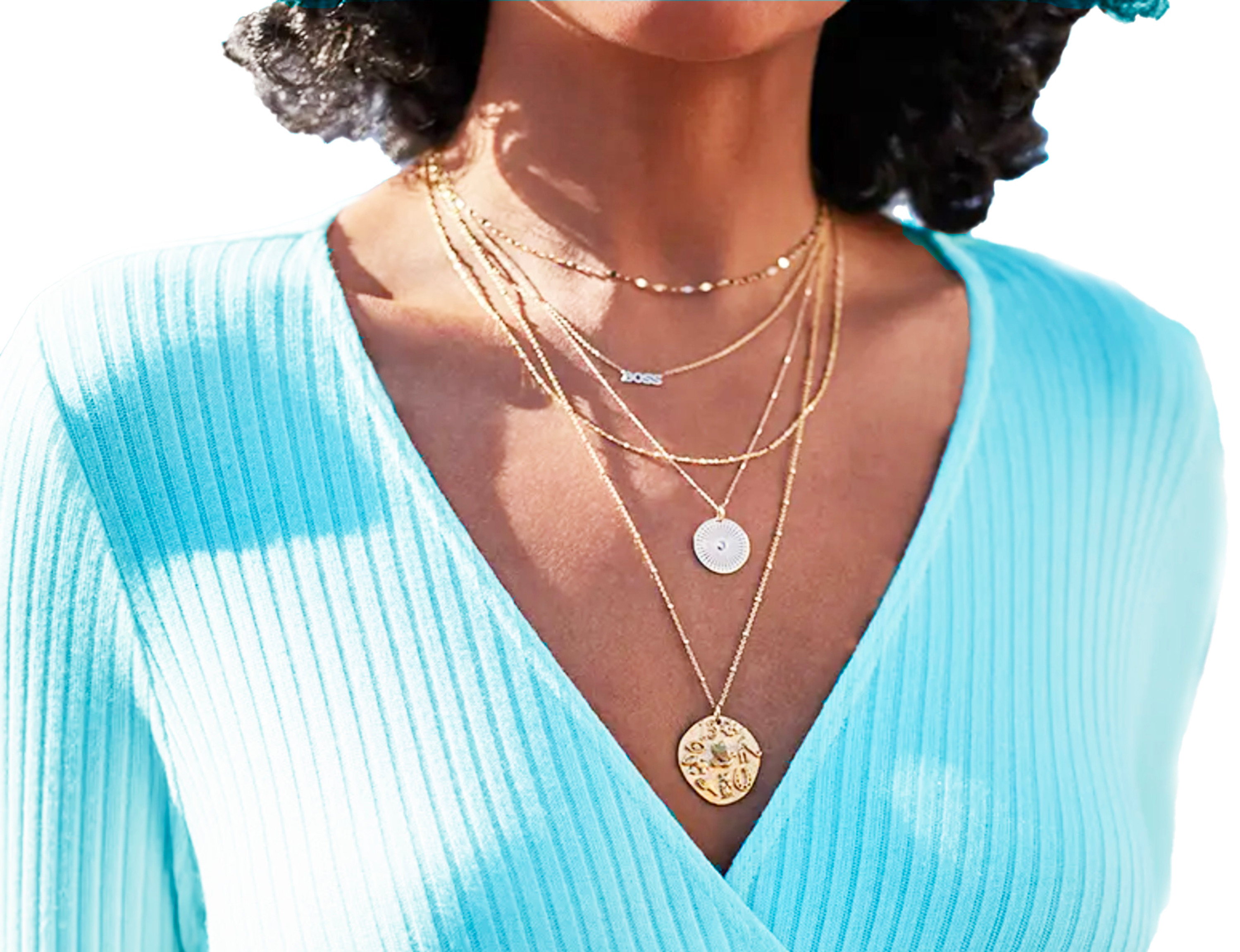The Art of Layering: Mastering the Mix & Match Jewelry Trend
Posted by MS on Jul 25th 2023
Welcome, jewelry lovers, to a world where style thrives through the skill of layering and inventiveness has no limitations! I'm happy to divulge the techniques for conquering the mix-and-match jewelry trend as a seasoned jeweler with more than three decades of experience and in association with brilliant designers. Jewelry layering is more than just a short-lived trend; it's a classic way to express your originality and a chance to create a striking ensemble that represents your style.
1. Why Wear Jewelry in Layers?
A compelling method to convey a tale with your accessories is by layering jewelry. In the same way that a painter adds colors to create depth and complexity, you can create a work of own flair by fusing several pieces of jewelry. It enables you to give worn-out pieces a fresh look and find novel matches that revitalize your jewelry collection. Adopting this trend also gives you the opportunity to change up your appearance for every situation, whether it be formal, informal, or in between.
2. Adopting Versatility:
Embracing adaptability is key to mastering the mix-and-match trend. A wide variety of necklaces, bracelets, rings, and earrings can be worn in countless ways. To achieve a rich and multi-dimensional aesthetic, delicate chains, striking pendants, and boho charms can be casually combined. The secret is to achieve a balance between various lengths, textures, and designs, making sure they coexist peacefully.
3. Laying the Foundation:
Start your exploration of the layering technique with a focal piece, such as a striking pendant, a priceless family locket, or a sophisticated gemstone necklace. This will act as the focal point and establish the overall tone for your ensemble. The focal point's beauty and uniqueness can then be enhanced by adding complementary pieces.
Don't be afraid to mix metals; doing so can provide beautiful effects when using gold, silver, rose gold, and even platinum. Your layers gain depth from the contrasted colors, which also make each item pop. Our designers have some advice: start with two or three layers and add more gradually until you get the desired result.
4. Using Different Lengths:
Layering successfully requires experimentation with various necklace lengths. Longer necklaces offer drama and flair to your overall style, while a shorter choker or a delicate chain near to the neckline can provide a classy foundation layer. Your parts won't blend together if you use different lengths, which will also highlight each distinctive element.
5. Layering Rings and Bracelets:
Not only can you layer necklaces, but you can also layer bracelets, rings, and other accessories to improve your look. Don't be afraid to mix and match various materials and textures. Stack delicate bracelets alongside chunkier cuffs. The same idea holds true for rings: combine different designs and metals to produce an eye-catching tapestry on your fingers.
6. Peaceful Earrings:
Earrings, despite being smaller than other pieces, can be very important in completing your layered outfit. Choose a mix of studs, hoops, and dangling earrings that go well with the layers of your necklace and bracelet for earlobes that have several piercings. Don't forget that asymmetry can be attractive, so don't be afraid to combine various styles for each ear.
Conclusion:
Layering is a kind of self-expression and artistic expression in the world of jewelry, and the possibilities are truly unlimited. You can master the mix-and-match jewelry trend if you have a broad collection, an excellent sense of proportion, and the freedom to experiment. Accept the flexibility, experiment with lengths, and confidently stack your favorite pieces. Allow your imagination to soar as you create a distinctive appearance that embodies your character and honors the value of originality.
So, let's layer ourselves with self-expression, fellow jewelry lovers, since learning the skill of layering is a trip well worth taking.


